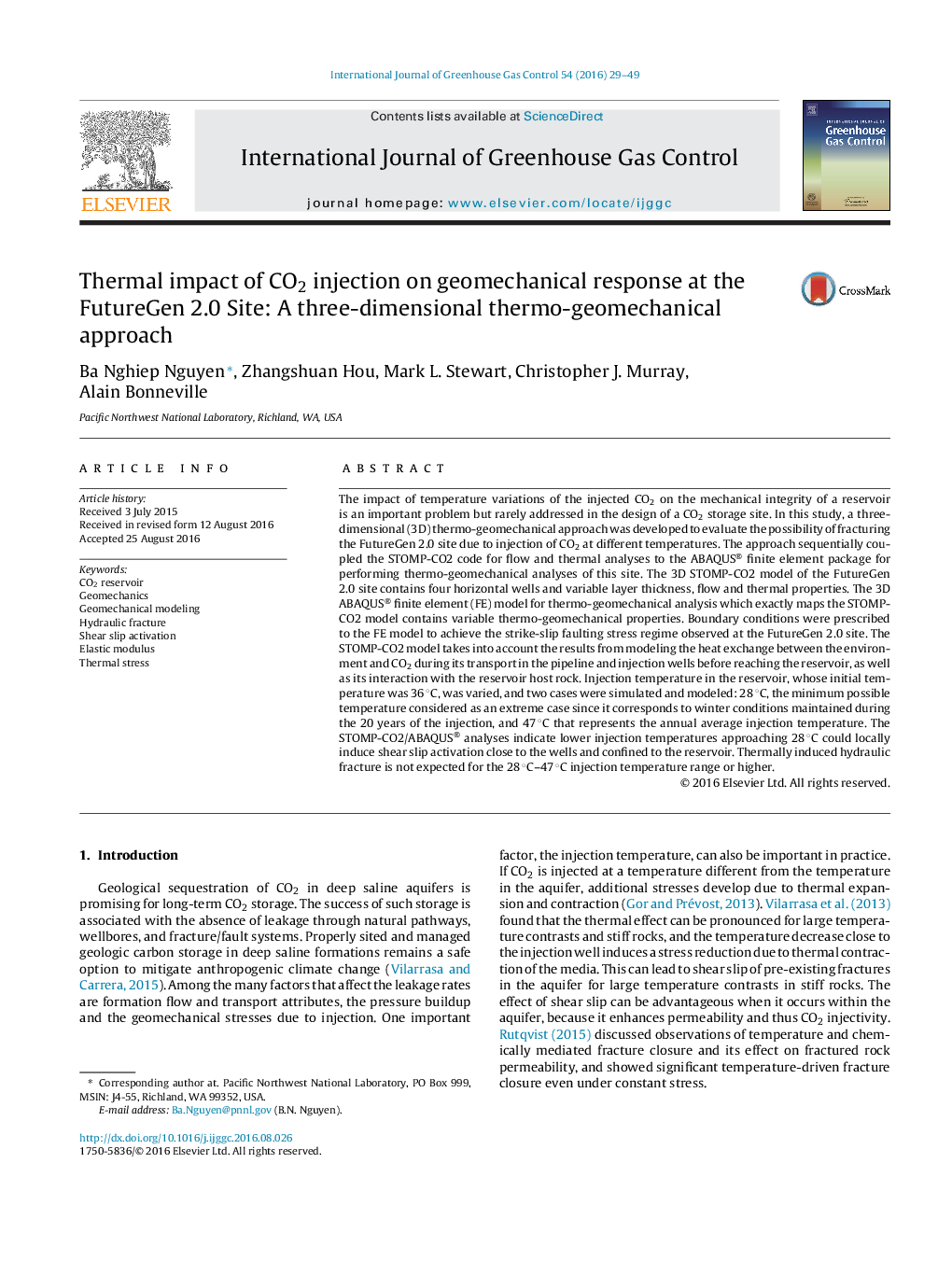| کد مقاله | کد نشریه | سال انتشار | مقاله انگلیسی | نسخه تمام متن |
|---|---|---|---|---|
| 1742832 | 1521966 | 2016 | 21 صفحه PDF | دانلود رایگان |
عنوان انگلیسی مقاله ISI
Thermal impact of CO2 injection on geomechanical response at the FutureGen 2.0 Site: A three-dimensional thermo-geomechanical approach
دانلود مقاله + سفارش ترجمه
دانلود مقاله ISI انگلیسی
رایگان برای ایرانیان
کلمات کلیدی
موضوعات مرتبط
مهندسی و علوم پایه
علوم زمین و سیارات
فرآیندهای سطح زمین
پیش نمایش صفحه اول مقاله

چکیده انگلیسی
The impact of temperature variations of the injected CO2 on the mechanical integrity of a reservoir is an important problem but rarely addressed in the design of a CO2 storage site. In this study, a three-dimensional (3D) thermo-geomechanical approach was developed to evaluate the possibility of fracturing the FutureGen 2.0 site due to injection of CO2 at different temperatures. The approach sequentially coupled the STOMP-CO2 code for flow and thermal analyses to the ABAQUS® finite element package for performing thermo-geomechanical analyses of this site. The 3D STOMP-CO2 model of the FutureGen 2.0 site contains four horizontal wells and variable layer thickness, flow and thermal properties. The 3D ABAQUS® finite element (FE) model for thermo-geomechanical analysis which exactly maps the STOMP-CO2 model contains variable thermo-geomechanical properties. Boundary conditions were prescribed to the FE model to achieve the strike-slip faulting stress regime observed at the FutureGen 2.0 site. The STOMP-CO2 model takes into account the results from modeling the heat exchange between the environment and CO2 during its transport in the pipeline and injection wells before reaching the reservoir, as well as its interaction with the reservoir host rock. Injection temperature in the reservoir, whose initial temperature was 36 °C, was varied, and two cases were simulated and modeled: 28 °C, the minimum possible temperature considered as an extreme case since it corresponds to winter conditions maintained during the 20 years of the injection, and 47 °C that represents the annual average injection temperature. The STOMP-CO2/ABAQUS® analyses indicate lower injection temperatures approaching 28 °C could locally induce shear slip activation close to the wells and confined to the reservoir. Thermally induced hydraulic fracture is not expected for the 28 °C-47 °C injection temperature range or higher.
ناشر
Database: Elsevier - ScienceDirect (ساینس دایرکت)
Journal: International Journal of Greenhouse Gas Control - Volume 54, Part 1, November 2016, Pages 29-49
Journal: International Journal of Greenhouse Gas Control - Volume 54, Part 1, November 2016, Pages 29-49
نویسندگان
Ba Nghiep Nguyen, Zhangshuan Hou, Mark L. Stewart, Christopher J. Murray, Alain Bonneville,